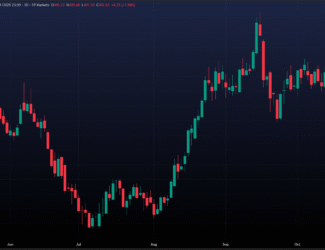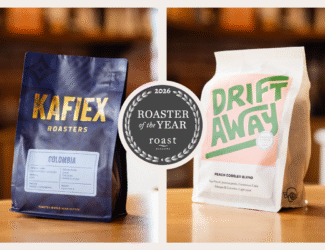
Coffee Rivalry Intensifies: Starbucks Confronts Luckin’s U.S. Expansion
Dubai, August 5, 2025 – (Qahwa World) – A new chapter in the global coffee rivalry is unfolding in New York City as China’s Luckin Coffee takes bold steps into the American market—prompting an assertive response from longtime industry leader Starbucks.
In a symbolic move, Starbucks has transformed the windows of a vacant storefront at 757 Broadway—directly across from a newly opened Luckin location—into a massive ad space. The branding blitz includes vibrant visuals and the message “Hello Summer,” while digital screens near the subway exit continue the campaign just steps from Luckin’s entrance at 755 Broadway.
This marketing standoff marks the start of Luckin’s U.S. push, following its meteoric rise in China. The company, founded in Xiamen, surpassed Starbucks in China two years ago in terms of both store numbers and revenue. It now operates more than 26,000 outlets, nearly all within China. Starbucks, in contrast, boasts over 41,000 global stores, including about 7,800 in China alone.
Luckin’s entry into Manhattan began with two shops in June, and more are expected soon. The company’s strategy is built around a mobile-first approach: customers must order through the Luckin app, which tracks preferences and offers promotions for bulk orders. Unlike Starbucks’ traditional café model, most Luckin outlets—including those in Manhattan—offer minimal seating and focus on takeaway service.
Starbucks is feeling the pressure. Although it remains the dominant global brand, the company is undergoing significant changes under CEO Brian Niccol. With customer footfall shifting, Starbucks is investing approximately $150,000 per store to upgrade interiors and bring back the “coffeehouse feel” that once defined its brand. This includes more seating, refreshed design, and a focus on hospitality.
Last week, the company announced plans to shut down 80 to 90 mobile-order-only locations, citing a lack of the social experience customers expect from the brand.
“We realized that purely transactional stores lack the human connection that defines our identity,” Niccol stated in an earnings call.
Data from Advan Research suggests the strategy may be paying off: visits lasting 30 minutes or more increased 5% year-over-year in the second quarter.
Meanwhile, Luckin is leveraging affordability and speed to win over New Yorkers. Promotional signs outside its locations advertise $1.99 drinks for first-time app users—a tactic aimed at a fast-paced, deal-hungry urban market.
“I come here for the discounts,” said Henry Barklam, a local software developer, as he left a Luckin outlet. “Starbucks used to be my go-to for working, but it doesn’t feel the same anymore.”
Nearby, student Rachel Maxwell, in the city for a summer internship, said she appreciates Luckin’s efficiency. “New York moves fast, and so do I. It’s nice to grab a coffee and go without waiting in line or making small talk.”
Others, however, see value in the grab-and-go model Starbucks is phasing out. Police officer Julio Guadalupe, standing near one of Starbucks’ soon-to-close mobile-only outlets, said the convenience can’t be overstated.
“For people in uniform or on tight schedules, mobile pickup is a game-changer,” he said. “I think this is where the future of coffee service is headed.”
Despite the competition, Starbucks maintains that its core strengths lie in ambiance, quality, and service.
“We remain committed to what makes us special—welcoming spaces and handcrafted beverages made by skilled baristas,” a company spokesperson said.
Luckin Coffee has yet to issue a statement regarding its U.S. operations.
As the world’s two largest coffee chains face off on American soil, the outcome could shape the future of global coffee culture—one cup at a time.



